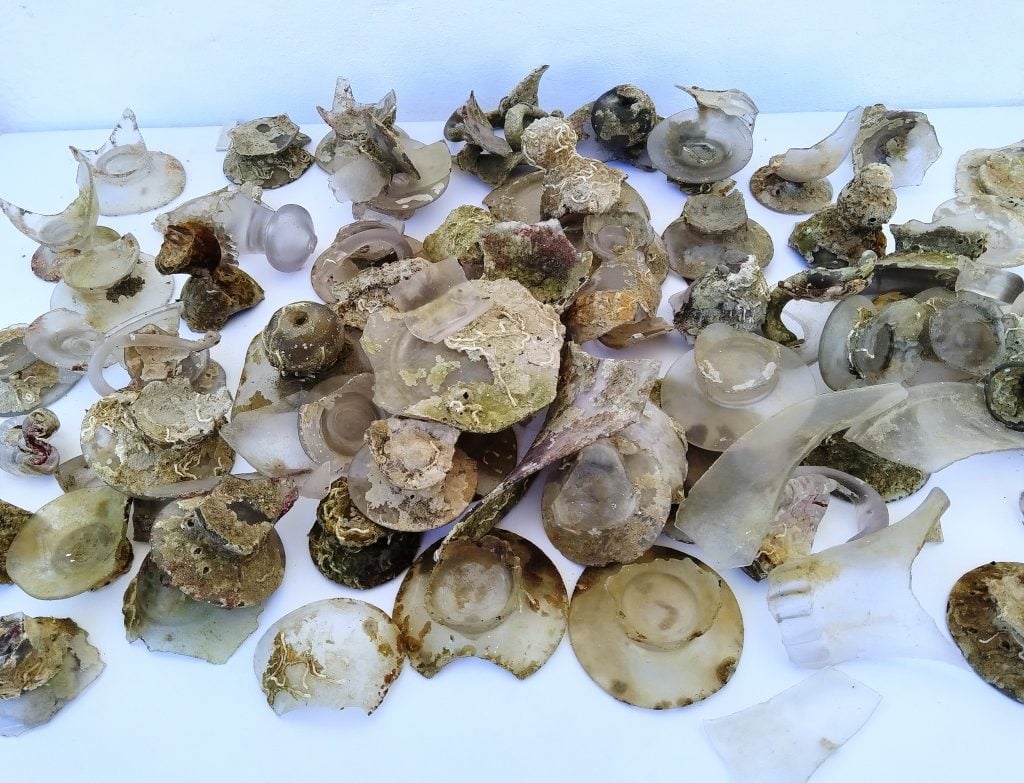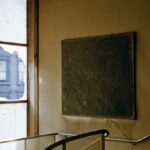Underwater archaeologists in Burgas, Bulgaria have discovered over 100 glass objects dating back to the days of the Ottoman empire in the nation’s Chengene Skele bay. Previous dives in the area in the years 2020 and 2021 resulted in the recovery of over 300 more glass objects from the seabed.
According to a statement by Burga’s Regional Historical Museum, researchers found the objects at a depth of 6.5–8 feet. It is speculated that the glass artifacts fell from the cargo of a ship battered by a storm in the shallow, rocky area of the sea. The ship’s wreckage is expected to be discovered in the vicinity. Iron fragments from anchor chains and chips of ceramic vessels bear identifiers similar to ceramic produced during the Late Middle Ages and the Renaissance.
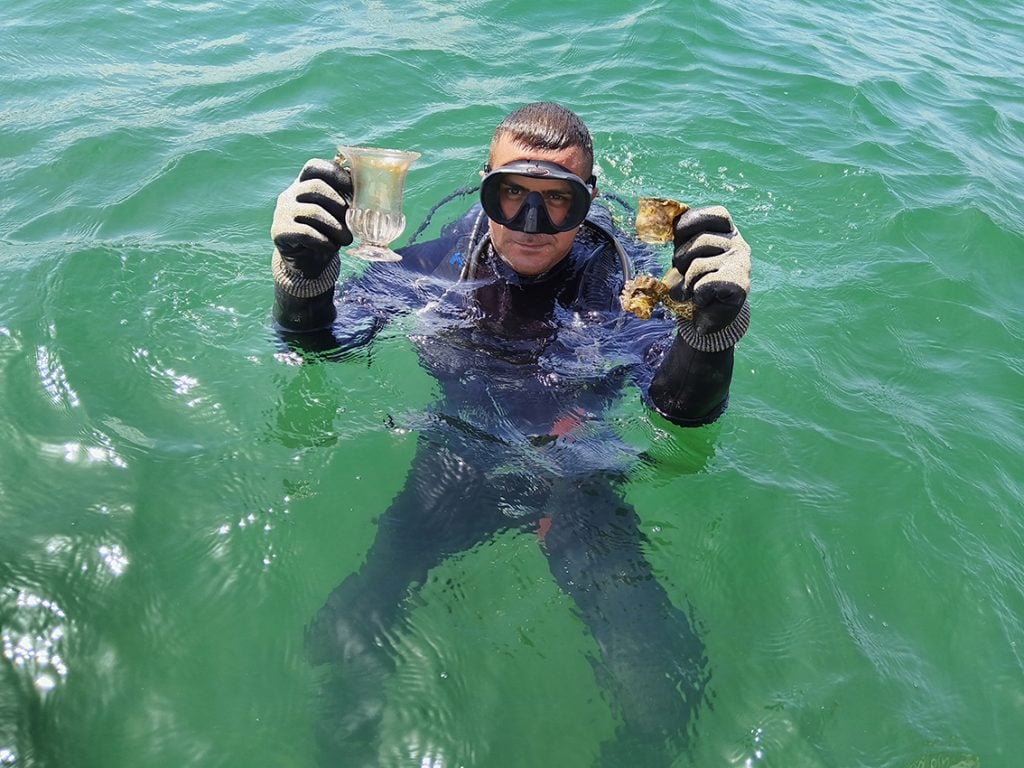
An archaeologist holding some of the glass vessels unearthed. Courtesy of the Regional Historical Museum Burgas.
Experts attribute the glass objects to Murano, a Venetian island still renowned today for its fine glassware, likely made in the late 16th and early 17th centuries.
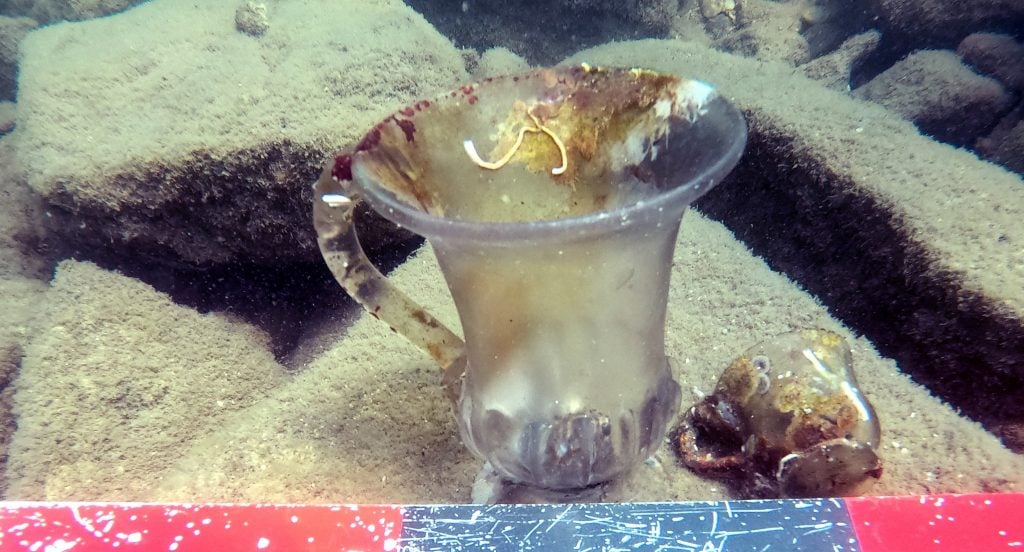
An individual, well-preserved vessel. Courtesy of the Regional Historical Museum Burgas.
In a second designated zone, to the west of the zone where the glass was discovered, a pile of ceramics was discovered. Covering an area that spanned over 1000 square feet, excavations in the zone resulted in a lead weight from the Roman period, amphorae, which are ancient Greek vases, from late antiquity, and Medieval ceramics from the 12th and 13th centuries. A medieval pier was also uncovered at the southeastern end of the bay. Historical records from European diplomats of the 18th and 19th centuries frequently reference this pier.
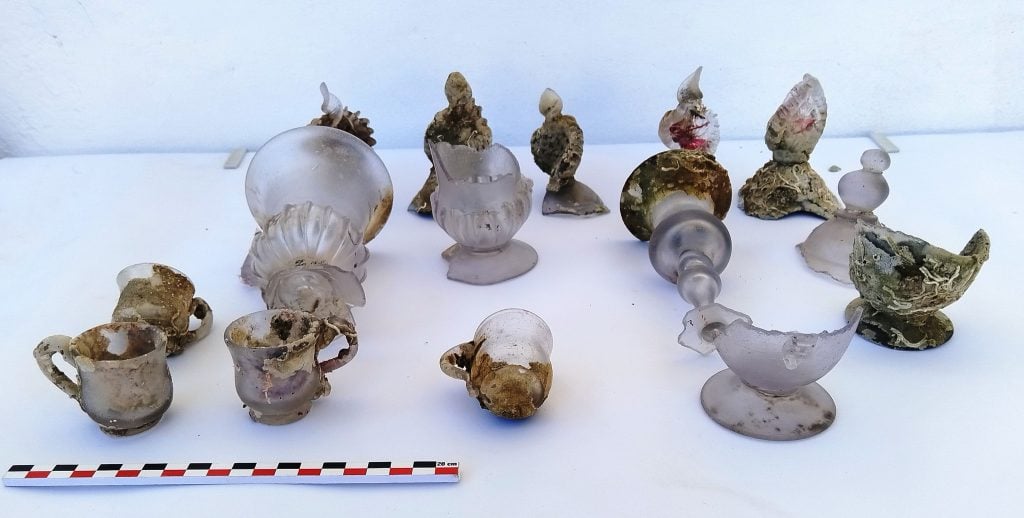
The large trove of glass vessels found underwater off the coast of Bulgaria. Courtesy of the Regional Historical Museum Burgas.
The museum’s Facebook post calls the finds “an important source of information on the poorly researched topic of consumption, trade, and production of glass in the Balkans during the Late Ottoman Period.” The newly unearthed artifacts will be conserved by specialists and displayed at the Burgas’ Regional Historical Museum.
Follow Artnet News on Facebook:
References: this article is based on content originally published by Adnan Qiblawi on Artnet. You can read the full article here.
